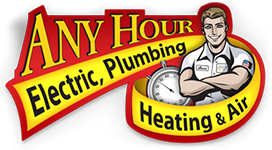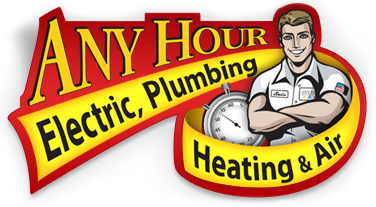Is the Air in Your Home Helping Keep You Healthy?
Right now, there’s one thing that most everyone has in common: we’re all staying home. Families are working from home, working out at home, homeschooling, eating meals at home, playing, creating, and otherwise living strictly at home. Not only can this be a test of sanity and patience sometimes, but this can also be an issue of health. We’re staying inside to avoid contracting COVID-19, yet being locked up in the house can also be an issue of indoor air quality.
Modern homes and buildings are built to be energy-efficient, well-insulated, and tightly constructed. This is great when it comes to heating and cooling costs, but it poses a significant problem when you start to think about airflow and circulation. This poor circulation means that any allergens, dust, molds, or bacteria that are brought into the home just hang out there, thriving, growing, and causing allergic reactions or sickness for the people inside.

For example, have you ever wondered why you feel more congested when you wake up in the morning? That congestion could be stale air, full of dust mites and their matter, mold, dust, volatile organic compounds (VOCS) or other irritants congregating in your room at night. The exposure all night long could be making you congested. This is a particularly prevalent problem now, when springtime allergens are exploding outside.
Additionally, have you thought about why, when one person brings a sickness home, the whole house ends up getting sick? It’s because those germs and viruses hang in the air of your home without being ventilated out. So right now, where everyone is concerned with COVID-19 and the spread of germs and viruses, it’s especially important to control the quality of your indoor air.
So what can you do? Here are Six Tips to Help Improve Your Indoor Air Quality:
1 - CHANGE YOUR AIR FILTER REGULARLY
Your air filter is the first line of defense against large particulates circulating throughout your home. Take the filter out of your furnace and hold it up to the light. If you can’t see light through the filter, it’s time to change it out. This helps keep large particles out of the air.
You can read more about what happens when you don't change it here -- What Happens When You Don't Change Your Air Filter.
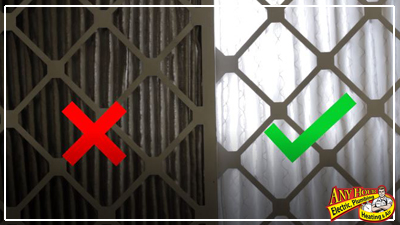
2 - OPEN THE WINDOWS
Throughout the year, the air inside your home becomes increasingly stale and full of contaminants that the occupants are regularly bringing in. Obviously, guests and occupants bring germs, viruses, and bacteria from school, work, shopping centers, public transit, or elsewhere—but there are other contaminants being introduced to your home that you might not be fully aware of. For example, pets bring in dander, obviously, but also molds and mites and spores that cling to their fur. Beyond that, introducing anything that has that “new” smell—be they electronics, furniture, paint, carpet, etc.—are toxins, or volatile organic compounds (VOCS) that will then be circulated through the home. These can be metals, petroleum distillates, formaldehyde, wood treatments, cleaning products, and others. Simply opening the windows can help push some of this bad air out and allow some fresh air in. To get maximum airflow, turn the furnace off but leave your furnace fan on to help push the air.
Be advised that there are better times than others to crack your windows, however. Avoid high pollen or heavily inverted, red alert air days.

3 - PURIFY WITH PLANTS
Plants are an inexpensive, decorative, and organic way to scrub some contaminants out of the air. Not only do they take in CO2, but they increase oxygen levels in the home and remove myriad other toxins, from benzene to formaldehyde, mold, and others. But not all plants are as effective as others. Some of the best are the Spider Plant, English Ivy, Boston Fern (which also acts as a natural humidifier), Peace Lily, Bamboo Palm, and Aloe Vera. Bonus: besides being an excellent air scrubber, the gel of the aloe vera plant can also soothe minor burns.

4 - KEEP SURFACES CLEAN
One of the simplest ways to improve indoor air quality is to keep surfaces clean. Regularly sweep and vacuum the floors to keep the dust down and consistently wipe down tables and countertops to keep germs and other bacteria to a minimum. When dusting, it’s also a great idea to wipe down surfaces with a rag, using furniture polish, as opposed to using a feather duster, for example, that will release the settled dust back into the air. Be sure to also keep the leaves of your plants dust-free by wiping them gently with a wet cloth. This will allow them to continue to “breathe” freely and help keep the air clean.

5 - HUMIDIFIY THE AIR
While this one is less about particulates in the air, a humidifying system can make a big difference when it comes to indoor air quality. Besides preventing static electric build-up in carpets and clothes, it helps prevent dryness of the skin, throat, and hair, to name a few. But it also helps to keep furniture and wood floors conditioned. (Many homes are equipped with a whole-home humidifier but many homeowners aren’t aware of the regular maintenance they require to keep working effectively. Click here to watch a video on how you can perform this maintenance yourself!)
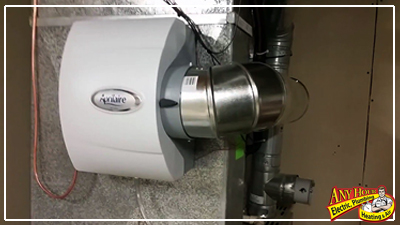
6 - USE AN AIR PURIFIER
To purify the air in your home, you have two options: one-room or whole-home purifiers. You also have two options when it comes to whole-home purification: active or passive purification systems. Let’s start with room purifiers and then discuss options for whole-home purifiers.
Room purifiers are a great idea for bedrooms and other areas where you spend a lot of time. They help circulate the air while also helping to filter it of fine particulates. However, be aware that budget air purifiers will generally do a budget job of cleaning the air. As with most things, you generally get what you pay for in portable home air filtration systems. Make sure that your system can filter particles smaller than 2.5 microns, as these are the fine particles like mold spores and insect matter that can cause respiratory issues to those with sensitivities. You should also be aware of the square footage capacity of your one-room purifier so it is consistent with the space you want it to cover.
On the other hand, a whole-home purifier works with your HVAC system to scrub the air as it circulates through your home. This can be accomplished in a couple of different ways. They can be divided into two categories: passive and active.
Click here to read more about this in our blog post on Whole-Home Air Purification.
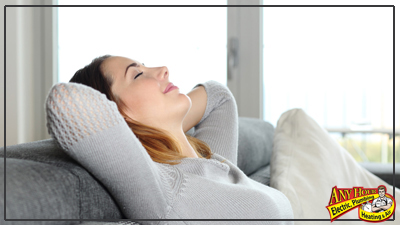
PASSIVE AIR PURIFICATION
Passive systems generally wait for the air to come to them. Passive systems are those where you either install UV lights or a 13-rated MRV HEPA filter on your system. Here’s how they work.
- HEPA FILTER - A HEPA filter works just like your standard filter, only it’s rated higher to collect and stop much finer particulates from being circulated through your air. This is a relatively inexpensive way to remove some of those airborne toxins like mold, germs, and viruses. However, there is a catch to this method. (Get it, catch? Like, catching particles?) Just like trying to breathe through a coffee straw, when the weave on your filter is tighter and more dense to catch more of the fine particles in the air, it restricts airflow. This forces your HVAC system to work harder, and actually makes your system less efficient and could be contributing to early system breakdowns. So, for the money you could be saving on this purification solution, it could potentially cost you big down the line.
- UV LIGHT - Another alternative that purifies the air in a passive way is a UV light. A UV light is installed in the ductwork of your HVAC system. When the air moves past the UV light, the light kills the germs, viruses, bacteria, mold, volatile organic compounds, odors, etc. that might be floating in the air. But, like any HVAC system-mounted passive purification solution, it is dependent on the air that passes over the light for effectiveness. So, while this can be an effective solution, it does depend on the effectiveness of your system as well to intake all the air in your home.
You can learn more about these on our blog post - How UV Lights Work
ACTIVE AIR PURIFICATION
- UVC AIR PURIFIERS - Rather than sitting and waiting for the pollutants to come through the system, active systems will actually go after pollutants in the air and on the surfaces of your home. An active purification system like the Reme-Halo attaches to the blower of your HVAC unit, and as the air passes over the Reme-Halo device, it sends ionized hydroperoxides into the home on a search and destroy mission.
When these naturally-occurring hydroperoxides disperse through the air and settle on the surfaces of your home, they attach to particulates, pollutants, volatile organic compounds (cleaning products, chemical odors), smoke, mold, bacteria, and viruses, they actually change the pollutant’s chemical makeup. What this means is that through a process called cell lysing, these friendly oxidizers revert toxins back to harmless oxygen and hydrogen. Research on this process is extensive and there are no known health risks to these hydroperoxides, which have existed naturally in our outside air for over 3.5 billion years.
So, if you are concerned about the indoor air quality of your home, there are many options that could help you make your air a little healthier. If you aren’t sure which solution is right for you, have a licensed HVAC expert come and answer your questions. They can assess your HVAC system as well as your needs and recommend the right purification system for you.
Hopefully, with these tips, you can improve the air quality and circulation inside your home, which helps everyone breathe a little easier. While we’re all spending so much time inside, we can do some small things to make sure our homes are a healthy place to be!
Author: Amber Smith-Johnson
Copyright © 2020 by Any Hour Services
Apr 4th 2020
